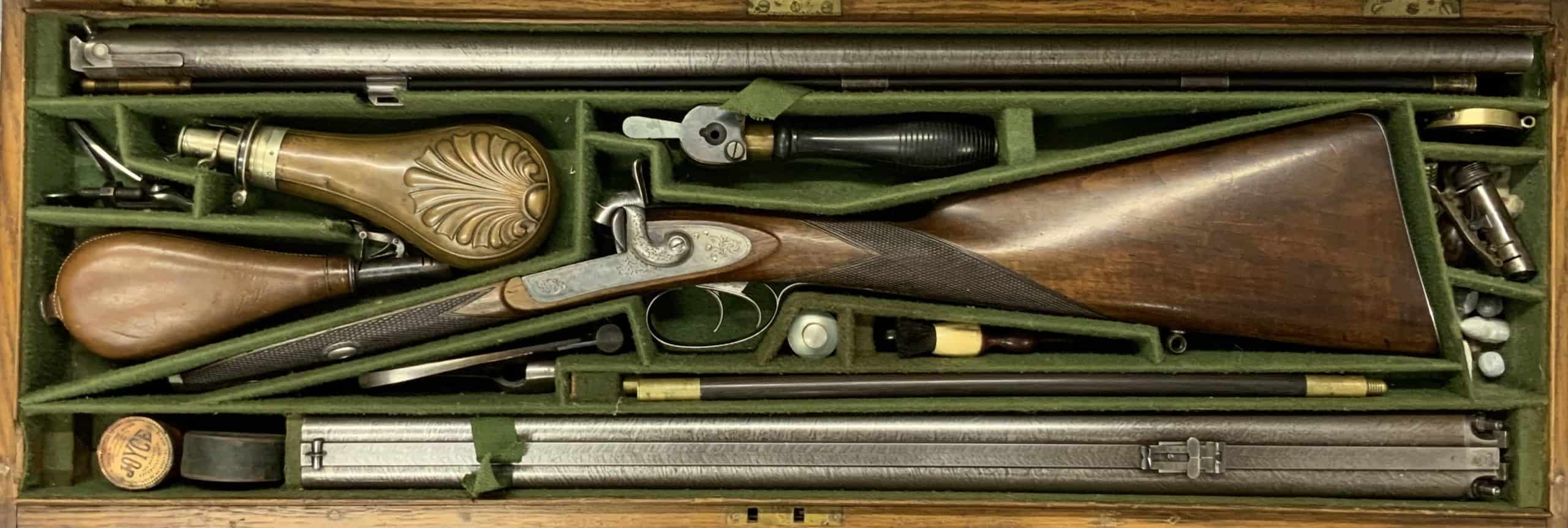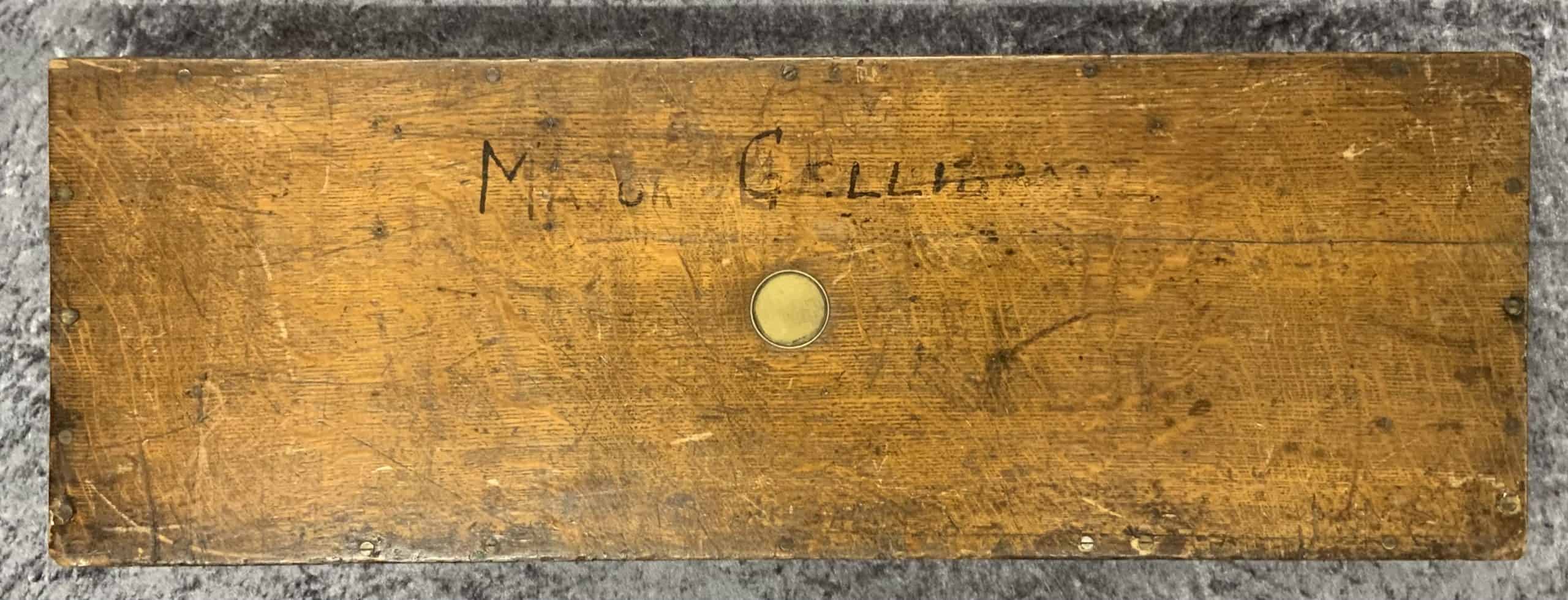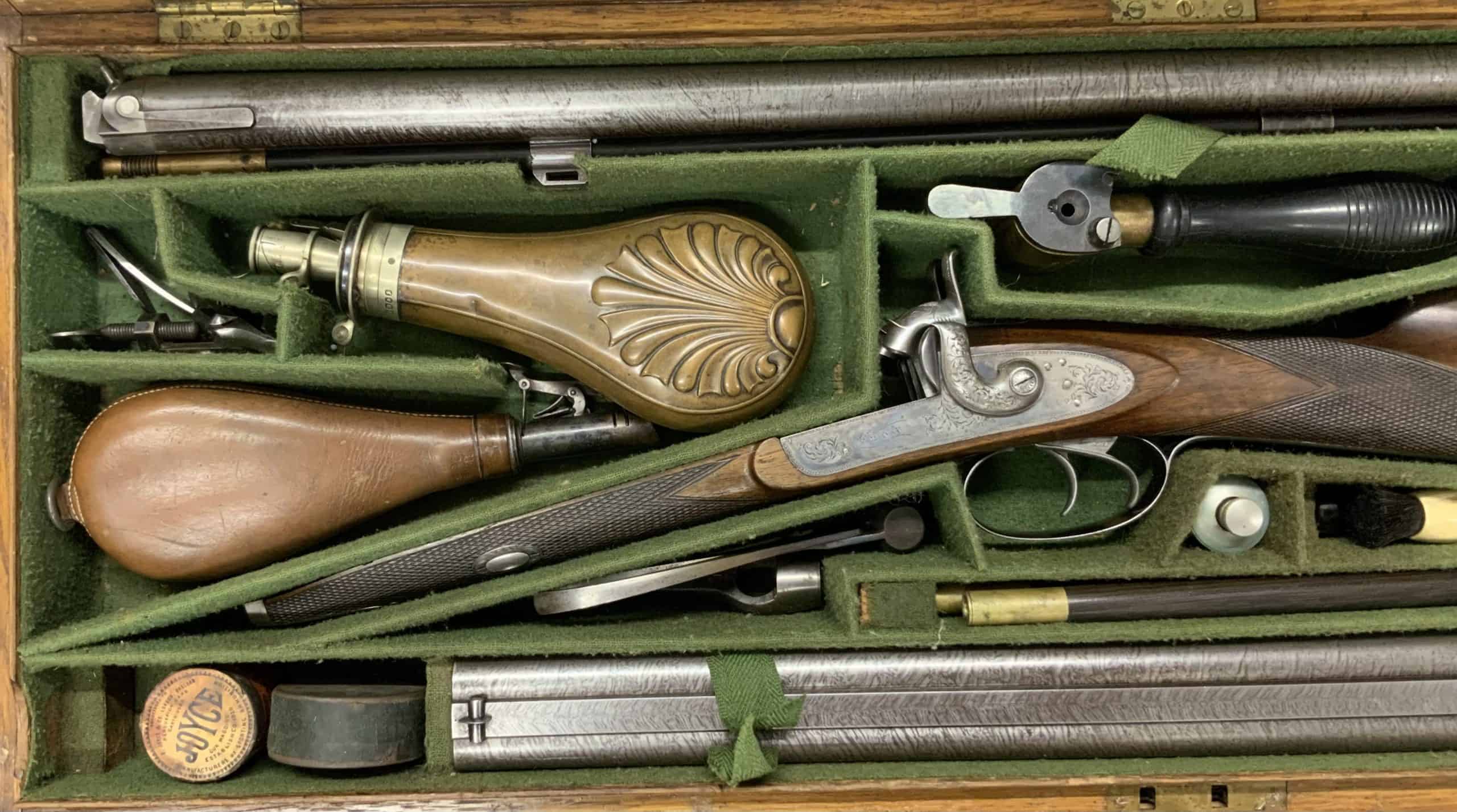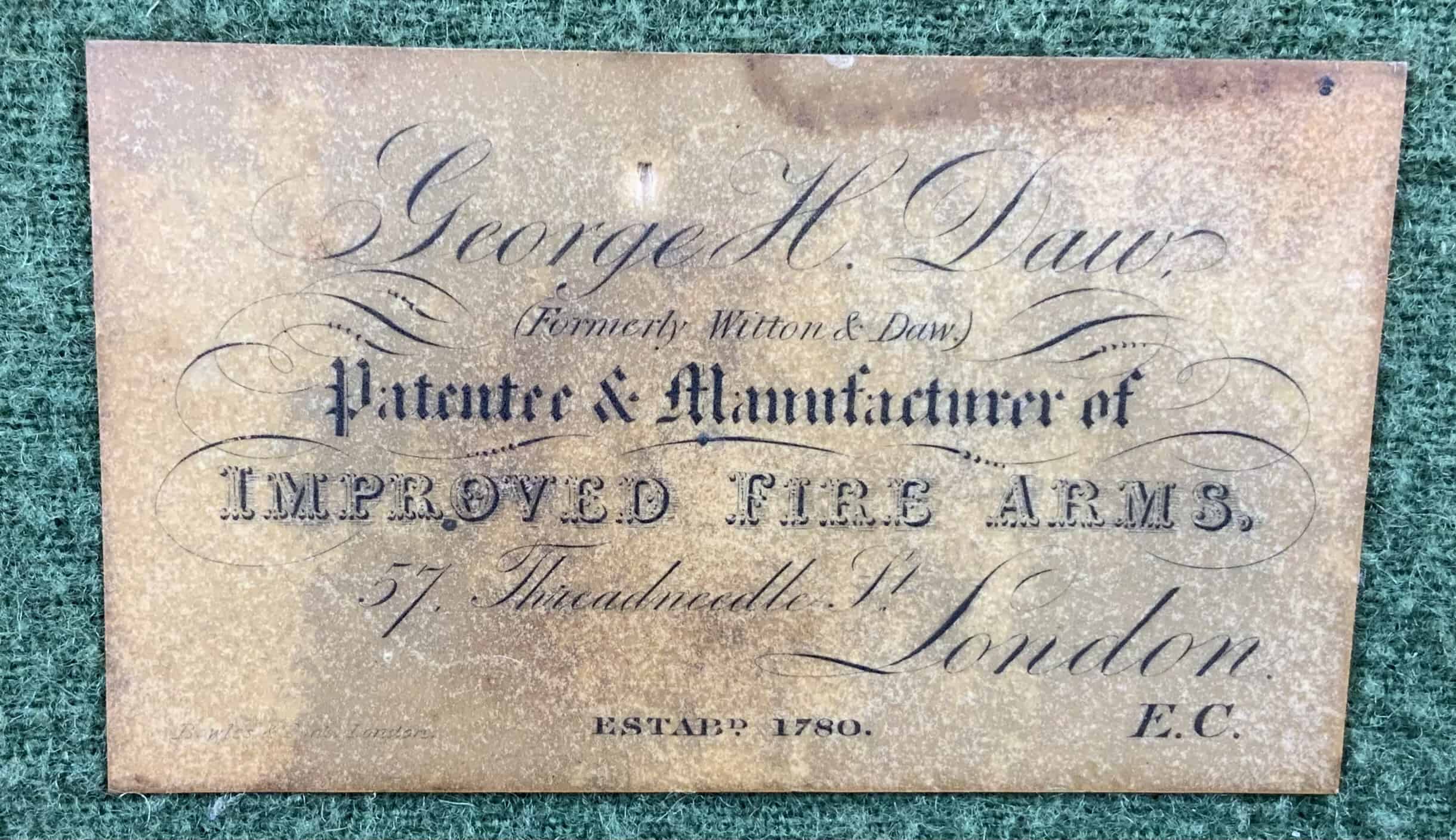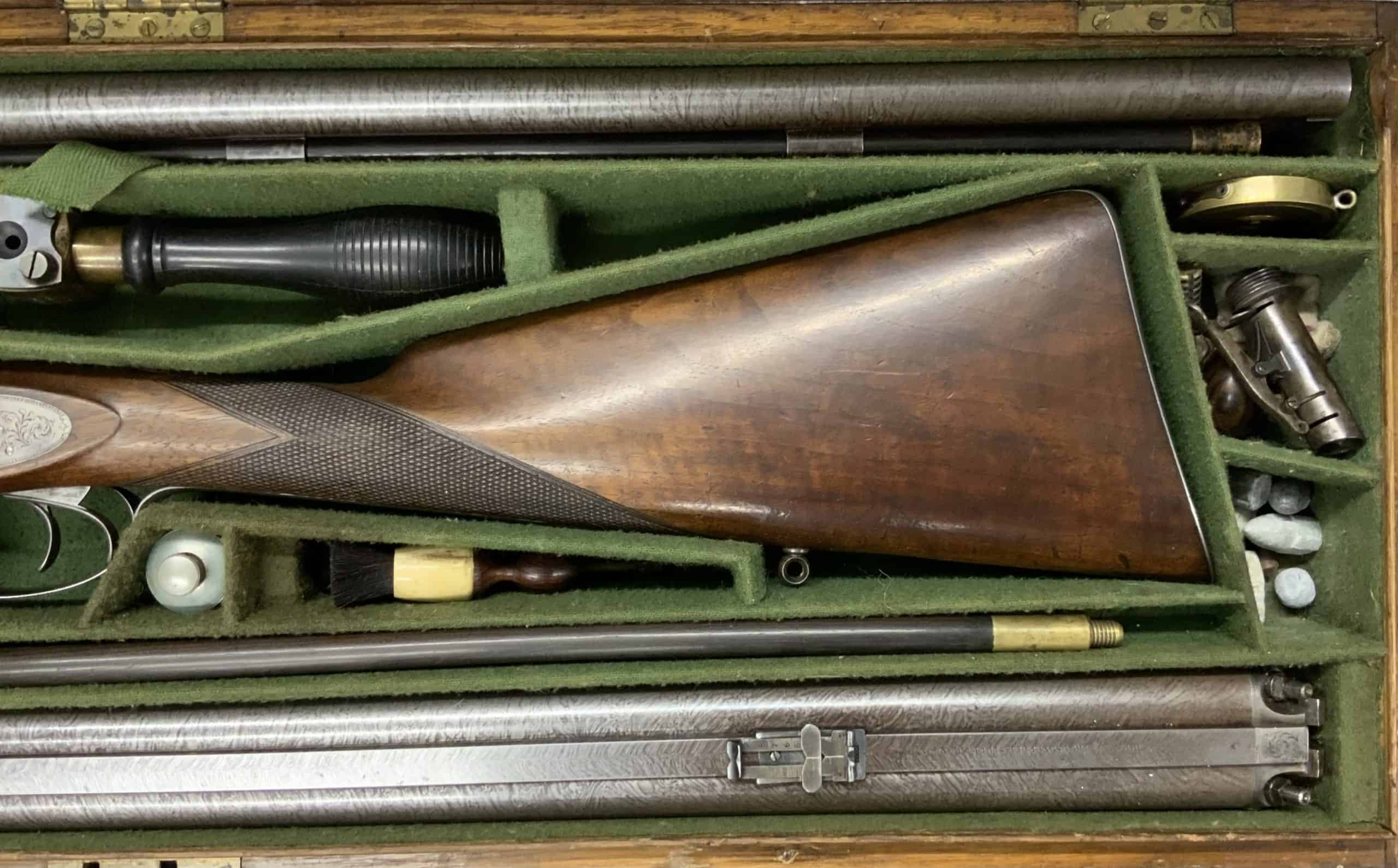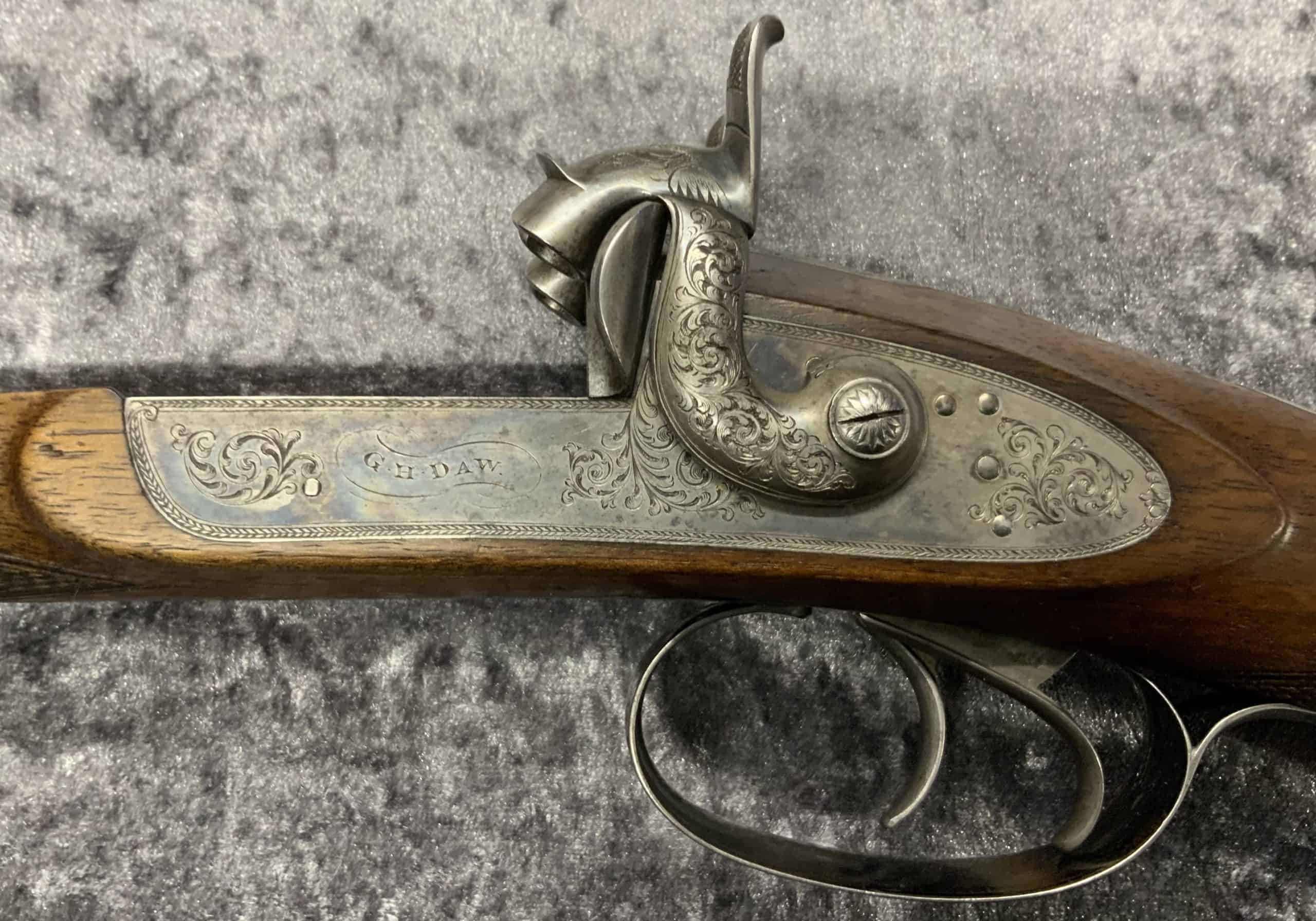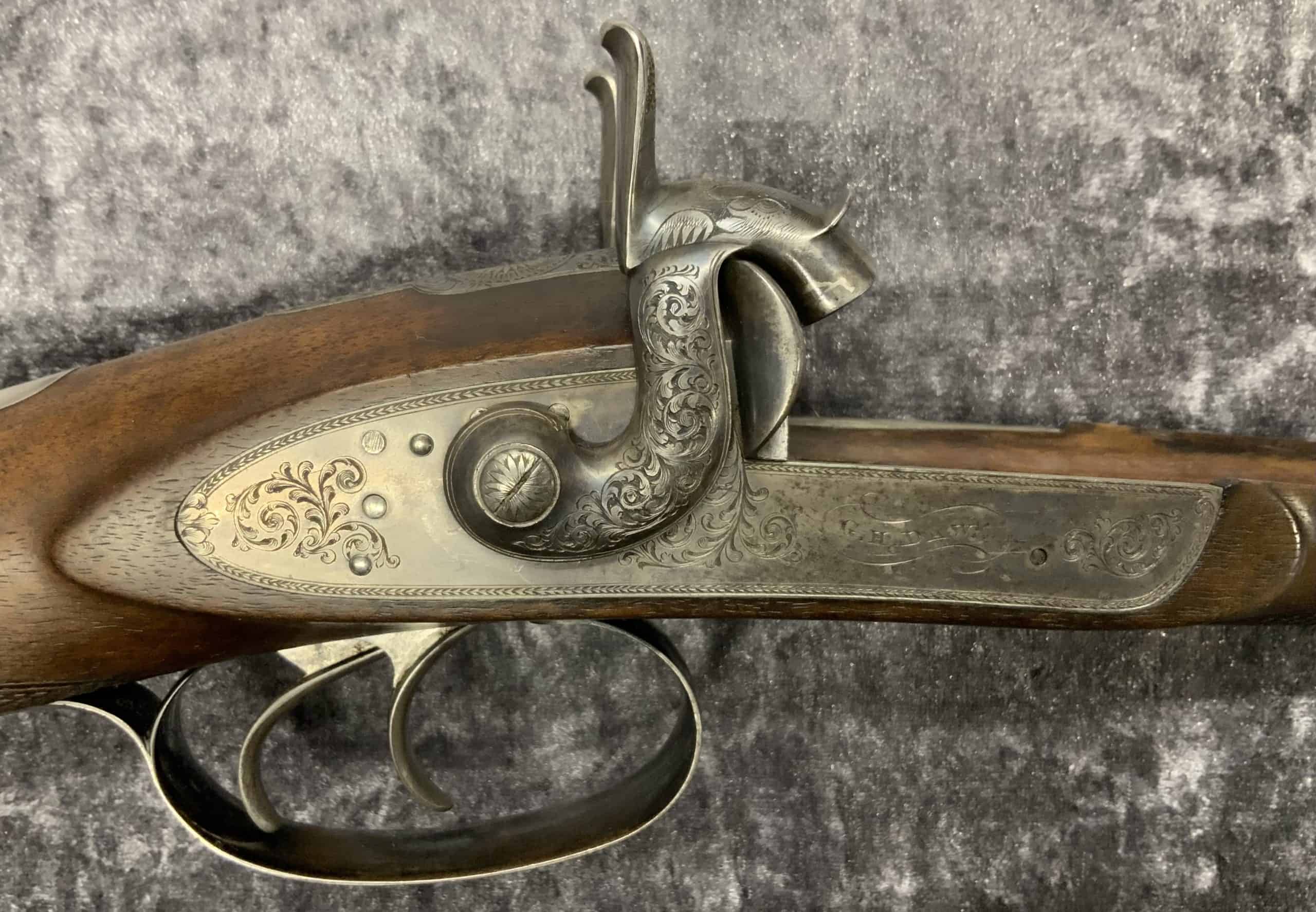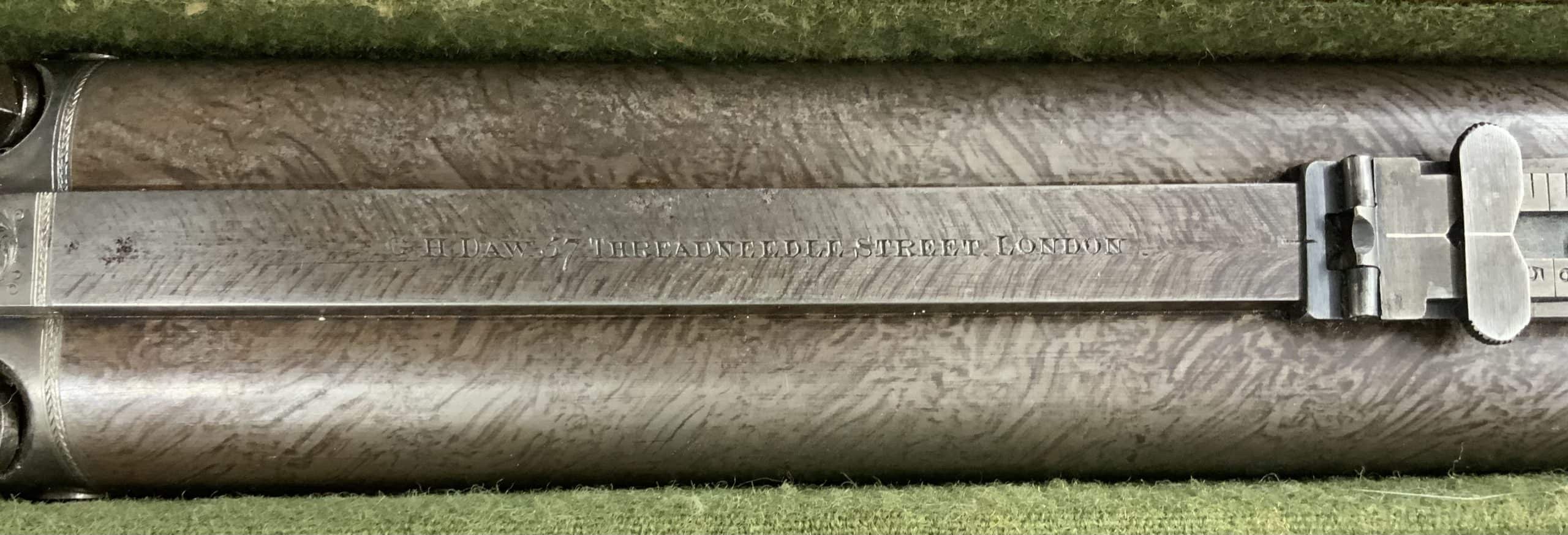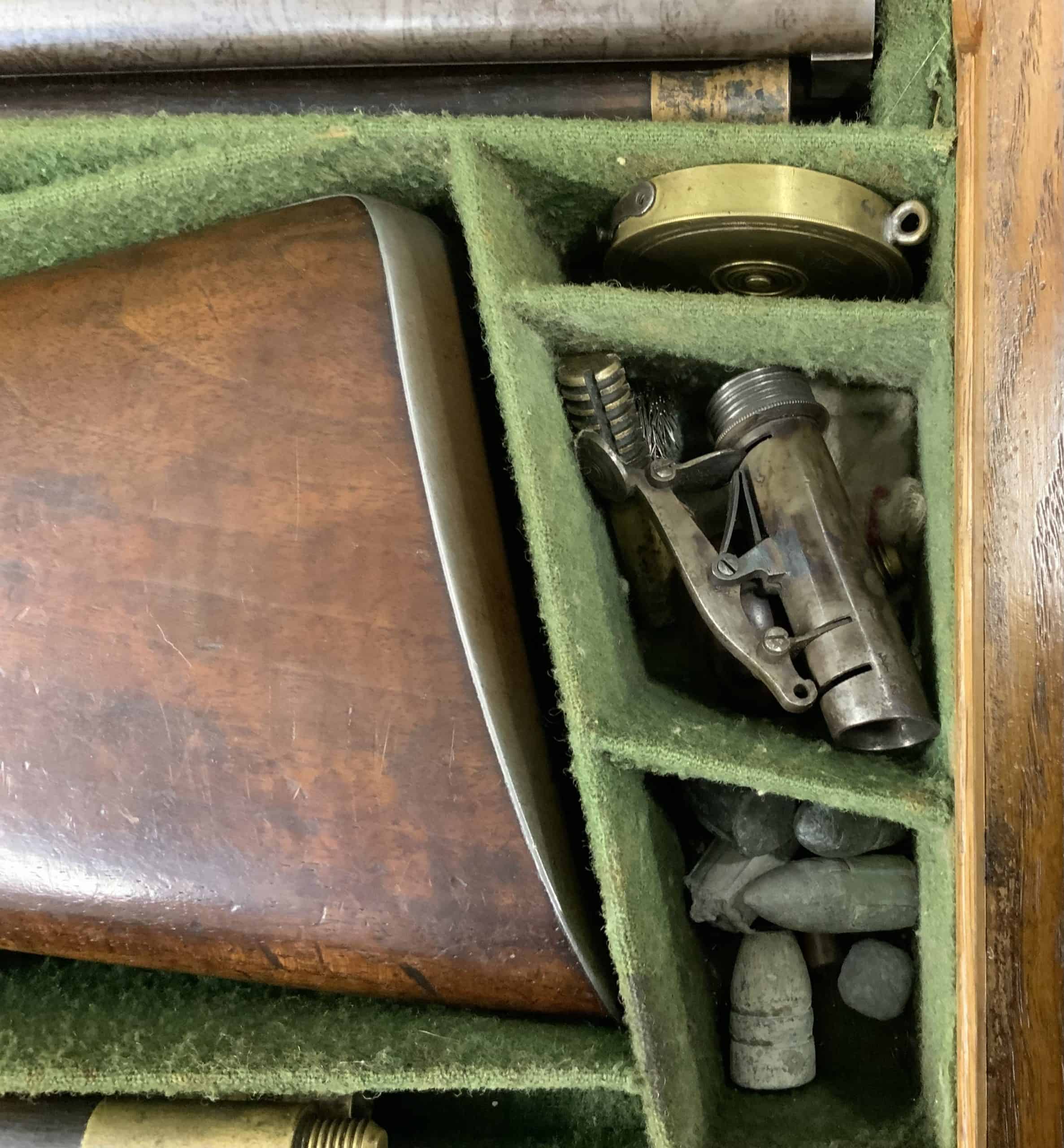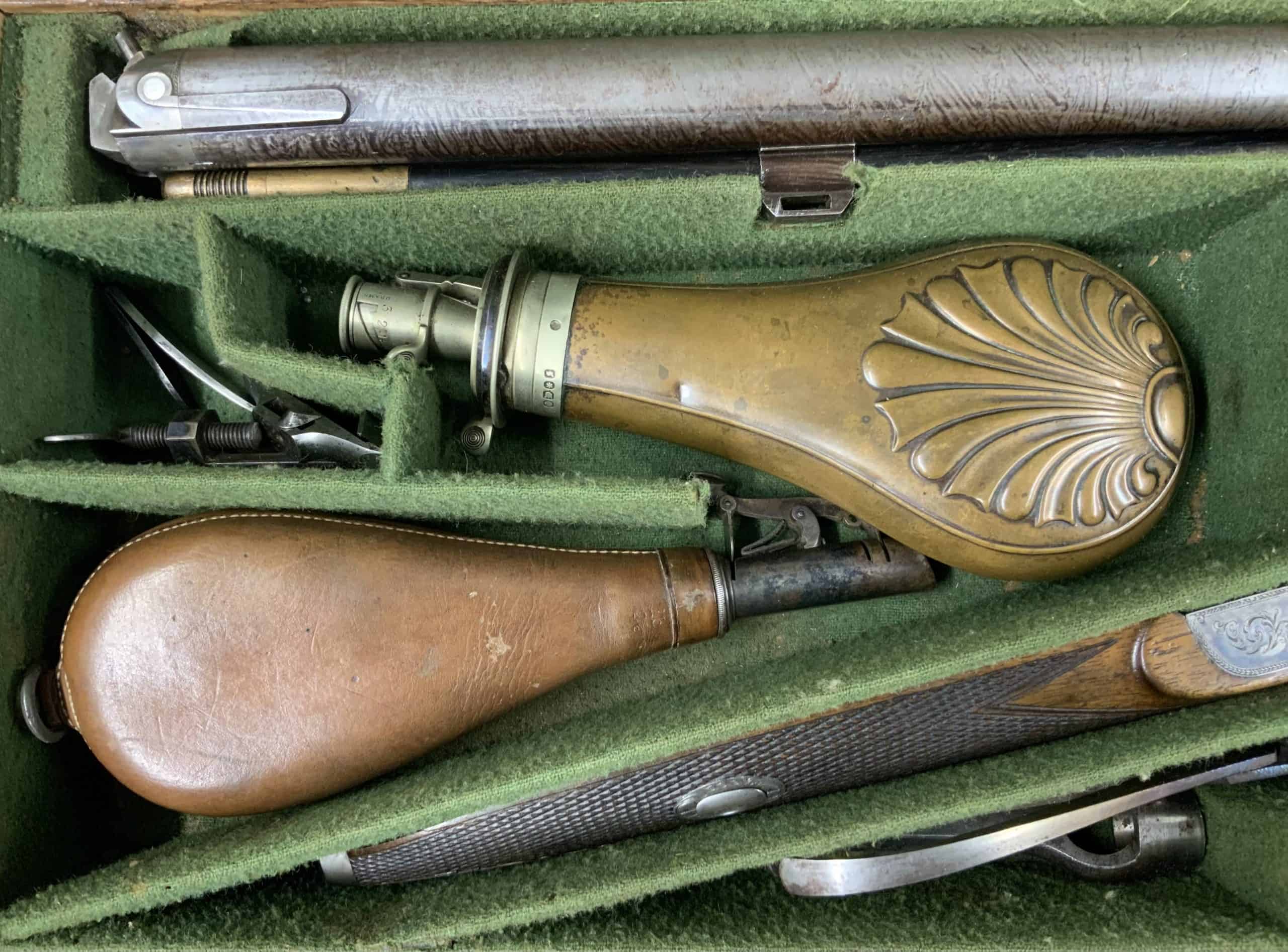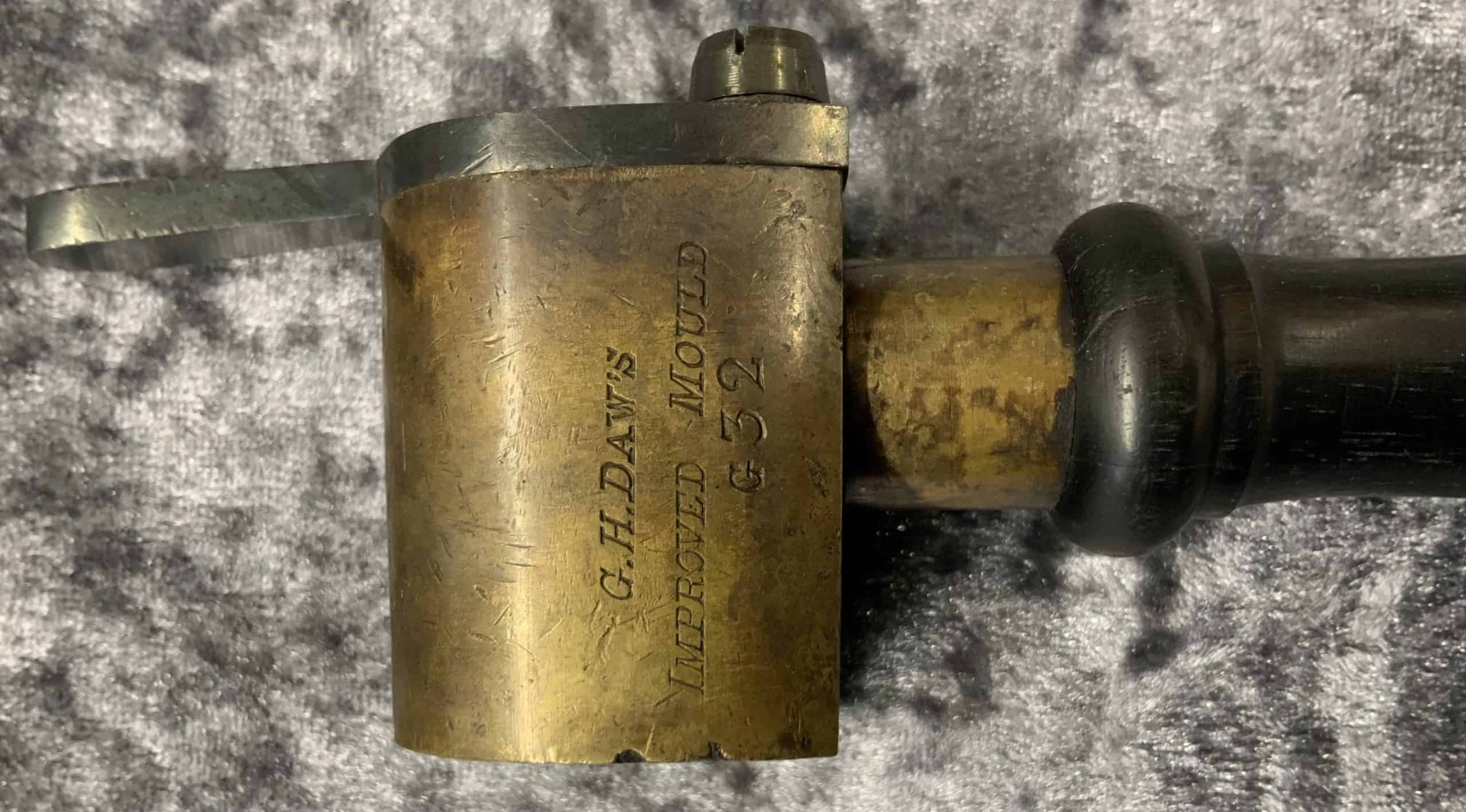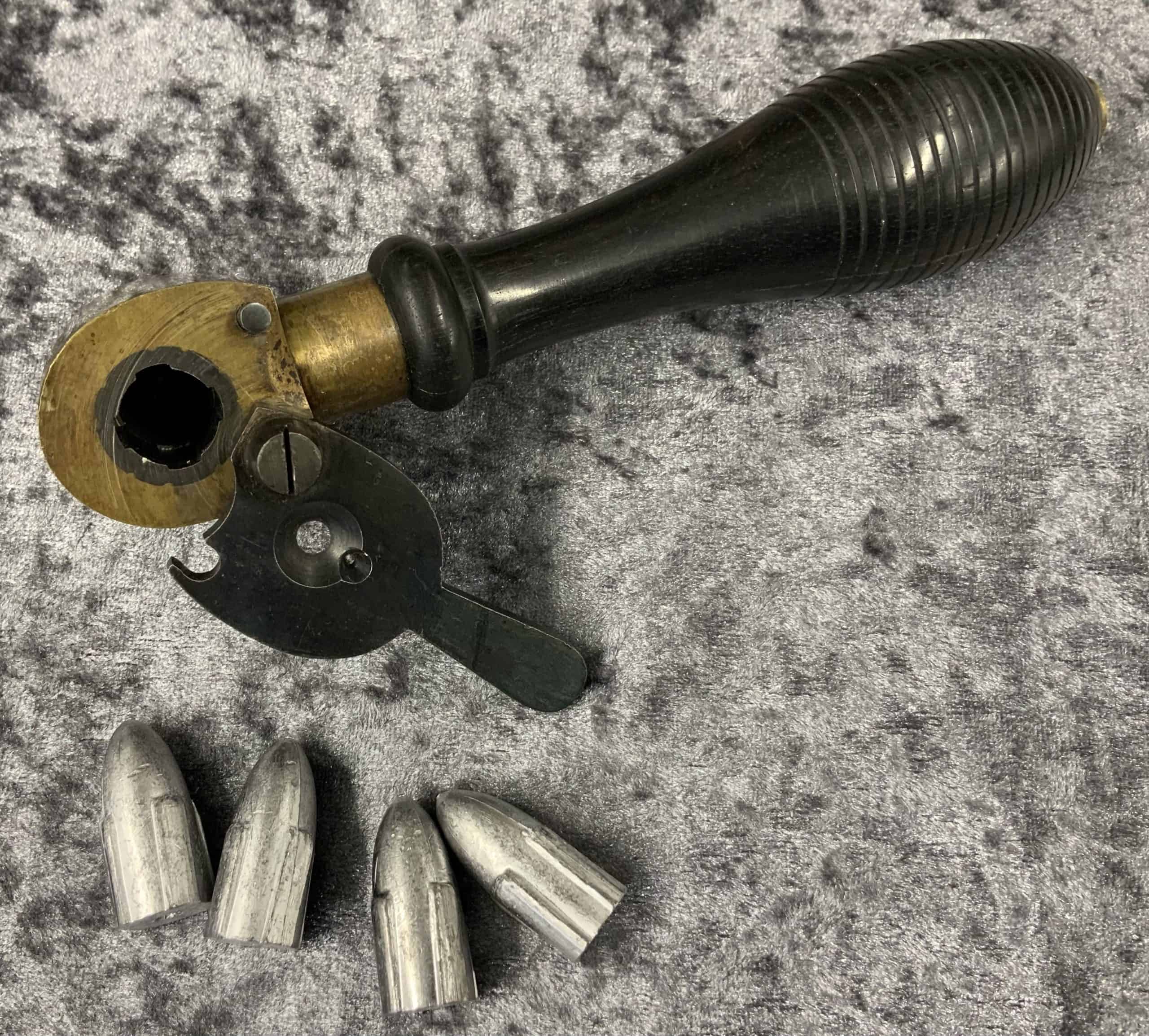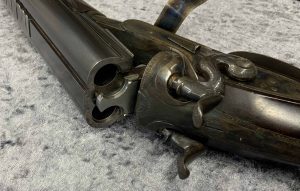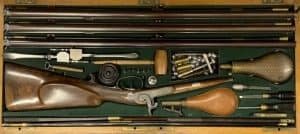Description
Very Scarce Cased G.H. Daw “Jacob” Percussion Double Rifle for Exploding Bullets with Extra 15 Gauge Shot Barrels
Very Scarce Cased G.H. Daw “Jacob” Percussion Double Rifle for Exploding Bullets with Extra 15 Gauge Shot Barrels. This cased set from George H. Daw comes with two sets of barrels: one set with four groove rifling for 32 bore (.524 caliber) Jacob winged bullets marked “GEORGE H. DAW 57 THREADNEEDLE ST LONDON” on the rib with London proofs and featuring a dovetailed bead style blade front sight and notch and folding ladder rear sight with gold sight lines graduated out to 1,000 yards and an extra 15 gauge smoothbore set marked “GEORGE H. DAW 57 THREADNEEDLE ST LONDON” on the rib with London proofs and a bead front sight. Both barrel sets include their own ramrod. The Jacob bullet or “rifle shell” designed by Colonel John Jacob of the British Army in India and uses a flat based elongated bullet with four wings that fit into the grooves of the rifling. The bullet is also designed with a cavity in the tip and can be used either as a hollow bullet or with a tube of mercury fulminate as an exploding bullet to target enemy artillery caissons. Jacob had his rifles built as double rifles rather than the usual single barrel rifles usually issued to marksmen. A well-built rifle firing Jacob bullets could hit a target accurately at over a thousand yards in trained hands. This gun was built as a gentleman’s sporting rifle by George H. Daw for hunting large and dangerous game, especially elephants and rhinoceros. Daw bullet mold for the rifled set are included in the case. The case also contains several bullets, a fulminate tube, a brass capper, cap tin, and additional accessories. The locks are signed “G. H. DAW”. The locks and furniture also have light border and floral engraving. The wrist escutcheon is silver.
George Daw was a very important maker, famous amongst other things for the Jacobs Rifle. He published a book in 1864 on his patents and inventions, so it is very likely the government awarded him with pieces to test. George Henry Daw successor to Witton and Daw, 57 Threadneedle St., City of London, 1861-79. Invented the centre fire cartridge and many other revolvers and breech loaders. Witton had started in 1815. they were Contractors to the Ordnance and the East India Company.
George H. Daw was a London based gunmaker and retailer. Daw was originally a partner with John Sergeant Witton, and they operated as Witton, Daw & Company from 1851-1852 at 82 Old Broad Street. In 1853 they moved to 57 Threadneedle Street and in 1854 became simply Witton & Daw. In 1860 George Daw took over the business and operated as George Henry Daw (also marking arms GH Daw and George H Daw). Daw’s advertisements stated that his firm was established in 1780, suggesting a long family history of gunmaking. Daw remained in business until 1889, and was located at several different London addresses between 1865 and the close of his business.
This rifle belonged to Major General Sir John Gellibrand:
KCB, DSO & Bar (5 December 1872 – 3 June 1945) was a senior Australian Army officer in the First World War, Chief Commissioner of the Victoria Police from 1920 to 1922, and a member of the Australian House of Representatives, representing the Tasmanian Division of Denison for the Nationalist Party from 1925 to 1928.
The scion of a prominent Tasmanian family, Gellibrand graduated top of the Royal Military College, Sandhurst, and was commissioned a second lieutenant in the South Lancashire Regiment (The Prince of Wales’s Volunteers) in October 1893. He served in the South African War, participating in the Relief of Ladysmith. In May 1900 he was promoted to captain in the Manchester Regiment, and served on St Helena where its primary task was guarding Boer prisoners of war. He graduated from the Staff College, Camberley, in December 1907, and served on the staff of the garrison commander in Ceylon. Frustrated at the poor prospects for promotion, he resigned his British Army commission in April 1912 and returned to Tasmania to grow apples.
For his services, Gellibrand was created a Knight Commander of the Order of the Bath in June 1919. He was appointed an Officer of the Legion of Honour, and awarded the Croix de Guerre by the French, and the Distinguished Service Medal by the Americans. He was also mentioned in despatches twice more
Gellibrand died at Balaclava from a cerebral haemorrhage on 3 June 1945, and was buried in Yea Cemetery. He was survived by his wife and children. His funeral service was attended by Major Generals James Cannan, Eric Plant and Charles Lloyd.
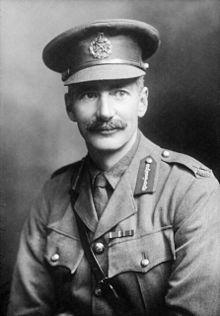

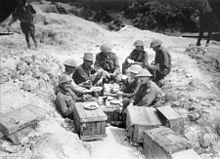
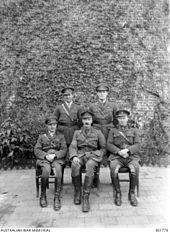
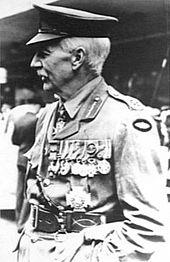
Description of pictures (left to right):
- Major General Sir John Gellibrand 2. Group portrait of 1st Division staff Officers at Mena Camp. Gellibrand is in the front row, third from the left. 3. Gellibrand (wearing a hat) and his staff having breakfast in a shell hole in Sausage Valley. 4. Gellibrand (front and centre) with his 12th Infantry Brigade staff officers. 5. Gellibrand on the occasion of the last Anzac Day march led by him – in Melbourne on 25 April 1939
Major General Sir John Gellibrand
Click here for more Antique Arms
